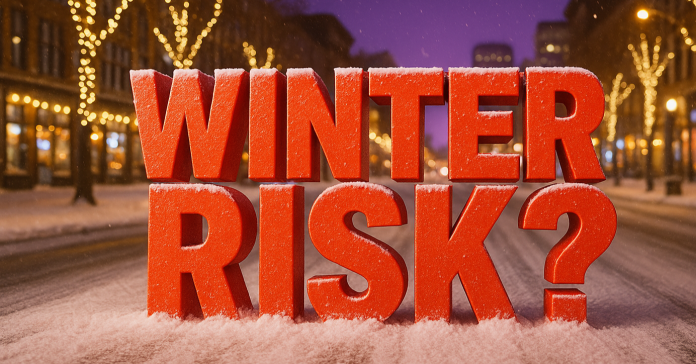Denver, CO – From the Front Range to the Western Slope, Coloradans are preparing for another unpredictable snow season. The National Weather Service’s (NWS) preliminary outlook for Winter 2025–26 shows equal chances of above, below, or near-normal snowfall and temperatures across Colorado, leaving storm risks firmly on the table.
According to the Climate Prediction Center’s September 25 update, a weak La Niña is expected this fall before fading into ENSO-neutral conditions by winter. That pattern often creates volatile setups in the Rockies, where elevation and storm track dictate how severe the snow season becomes.
“Predictability is very low right now,” forecasters cautioned, pointing to short-term wild cards like the Arctic Oscillation, which can bring Arctic air surging into the state and fuel heavy snow along the Front Range.
What It Means for Colorado
- High country and ski areas (Aspen, Vail, Steamboat, Summit County): Consistently favored for frequent snow, with potential for above-normal totals if Pacific storm tracks line up.
- Front Range (Denver, Boulder, Colorado Springs): Known for highly variable snowfall—some years bringing record storms, others much drier. Nor’easter-style upslope events can still deliver multiple feet of snow in a single storm, even in neutral winters.
- Eastern Plains (Sterling, Lamar, Burlington): More vulnerable to blizzard conditions and strong winds, which can create whiteouts and hazardous travel even when snow totals are modest.
Past ENSO-neutral winters in Colorado have brought some of the state’s most memorable blizzards, including spring snowstorms that disrupted travel and agriculture.
Preparing for the Season
The bottom line: Colorado is in a 50/50 snow-risk outlook heading into Winter 2025–26. While there’s no strong signal pointing to a record-setting season, the risk of heavy mountain snow, Front Range blizzards, and Plains whiteouts remains significant.
Meteorologists also warn that with a warmer-than-average fall underway, winter weather could arrive suddenly in late November or December, bringing early disruptions for holiday travelers.
The official NOAA winter outlook will be released October 16, which may provide more detail on Colorado’s snow potential.






